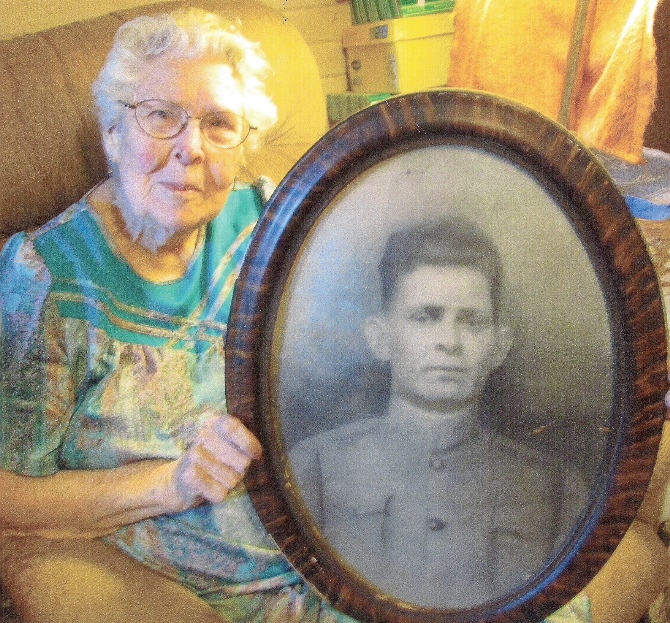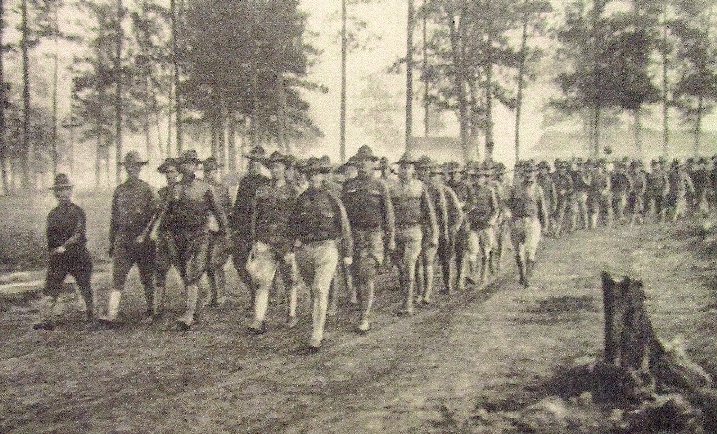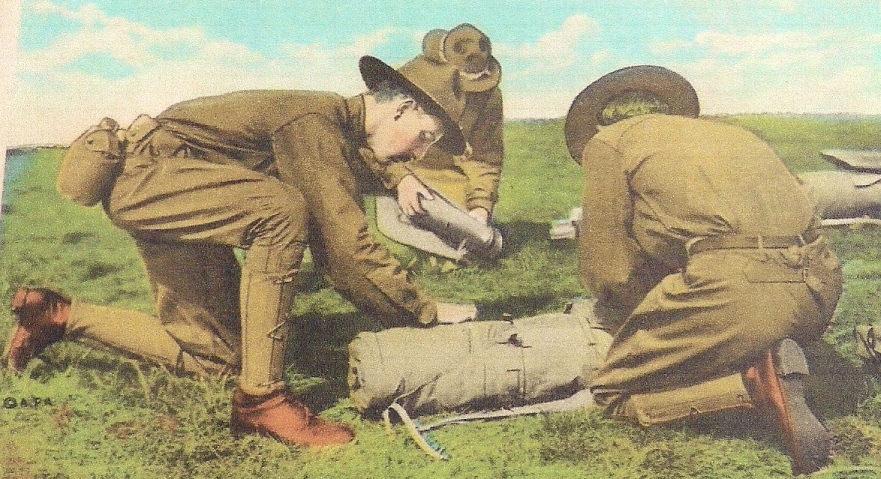THE 100TH ANNIVERSARY OF WORLD WAR I
BY RICKEY ROBERTSON
The old quote "time waits for no one" sure is a true statement. It is hard to believe that in 2018 it will be the 100th Anniversary of the ending of World War I. And sadly there are no living World War I veterans left for us to visit and talk with of their experiences. And what terrible ordeals they went through in the trenches and mud of World War I. World War I actually began after the assassination of Archduke Franz Ferdinand of Austria on June 28, 1914. For almost three years, the Allied Nations (Great Britain, France, Russia, Italy, Japan, and Romania) fought against Germany, Austria-Hungary, Bulgaria, and the Ottoman Empire before the United States entered the war.
President Woodrow Wilson wanted to keep the United States out of the war, but German U-boats continued to attack and sink neutral merchant and passenger ships in the Atlantic. When a German submarine sank the S.S. Housatonic in the spring of 1917, the United States declared war on Germany and its partners on April 6, 1917. In an effort to help the war effort, 14,000 U.S. troops arrived in France and went into the lines to fight the Germans. Here in the United States the military went into overtime to get troops into uniform. By the end of the war in 1918, over four million Americans had been activated and placed into military service. Training camps were filled with recruits and as soon as they had received basic military training they were assigned to divisions and were dispatched on troop ships to Europe. The battle cry of "The Doughboys are coming" was heard. Yes the American troops were known as "doughboys" and the Allied Nations were so glad for re-enforcements from America. The patriotic song "Over There" was sang everywhere since American fighting men were now over there in France. Here in Louisiana, Camp Beauregard, located near Pineville, La. began receiving recruits by the trainload. These recruits were processed and began their basic military training. One of these recruits was my grandfather, Ora Robertson. Every community, town, and every parish here in Louisiana began sending its sons into the military service so that they could go and defeat the German "Hun."
West Central Louisiana sent many of its young men off to war. Natchitoches, Sabine, and Vernon Parishes sent young men into all branches of the U.S. military. To support the war efforts the citizens of these parishes grew Victory Gardens and farmers were relied on to produce more and more food for the military and for American citizens. And there were shortages with people seeing many items rationed and people were buying war bonds to help support the war effort. But the folks in this area were patriotic and they supported the American boys who were "fighting over there."
And sadly many of West Central's young men were killed in action and were to never return home again. Here in Sabine Parish just a few of those killed in action were Wade Anderson, George Bass, C. T. Bennett, Miles F. Jordan, Lambert D. Stewart, John Garcia, J. H. Gay, Joe Brown, A. C. Wooley, J. R. Butler, Will Hudson, and John Williams. And there were many who were wounded in the many battles. Some of the wounded from Sabine Parish were Floyd Alford, George Leone Jr., John Chamberlain, Bradford Evans, J. E. Phillips Jr., W. E. Addison, A. D. Patrick, W. C. Boring, W. W. Ebarb, H. C. Duggan, and J. A. Durrett. American casualties were enormous in every branch of the service. A total of 116,000 United States military personnel were killed or died during the war and over 204,000 were wounded and crippled of their wounds. So many brave young men who fought for their nation never to return or to return crippled and injured for life.
I recently had the greatest visit with Sylvia Evans Brown who resides in the Clearwater Community in Ward 2 of Sabine Parish. This ninety-seven year old is the daughter of Bradford Evans who was a wounded World War I veteran. Her father had fought around the Argonne Forest and Belleau Wood (1-26 June, 1918) and he was shot through both cheeks of his face with a rifle bullet, was wounded with shrapnel, and he was gassed with mustard gas. He was returned to the United States to a military hospital in Pennsylvania. After months in the hospital, in which he lost use of a lung due to the mustard gas, he finally made it back to Sabine Parish. Sylvia remembers that when her father would get sick he would catch a train and would go to Veterans Hospitals in Little Rock, Arkansas and Pascagoula, Mississippi. He came home one time and got off the train at Florien and walked to his home. When he got there his family was excited to see him but he told his wife to bring some clothes to the barn. There at the barn he changed clothes and burned the ones he had at the Veterans Hospital because they were infested with lice. He was a farmer and was on a Veteran's Pension as long as he lived. He is buried in Clearwater Cemetery in Ward 2 of Sabine Parish.
On November 11, 1918 at 11:00 a.m. the war to end all wars ended with the signing of the Armistice in a rail car in France. The guns fell silent. The war was over. And when word was received in America that the war had ended church bells rang, fireworks were popped, shotguns were fired into the air and whistles were blown. Here at Peason the mill whistle blew loudly to let everyone know the war was over. And slowly the army units were shipped back home. Some units stayed and occupied Germany until 1919 but eventually all the doughboys came home. And they were welcomed home with parades and events to commemorate the victory. And yes we also had heroes who came from this war. Sgt. Alvin York of Tennessee won the Medal of Honor for his exploits on the battlefield and Sgt. Abe Allen of Leesville won the Distinguished Service Cross, the Distinguished Service Medal, and a Silver Star. And General Pershing also named Sgt. Allen as one of the war's "One Hundred Heroes."
So now it is 100 years since the ending of this great war. The men who served came marching back home to their homes and families and they helped build America into the great nation it is. But sadly, all the boys who came marching back home have now rejoined the ranks of their comrades once again and have marched down the street of gold. No World War I veterans remain, so don't let the memory of these brave fighting men to ever be forgotten. Moreover, when you see a Veterans' Parade why not sing the song that these men heard when they returned home?
When Johnny comes marching home again, hurrah, hurrah!
We'll give him a hearty welcome then, hurrah, hurrah!
The men will cheer and the boys will shout,
The ladies they will all turn out, And we'll all feel gay,
When Johnny comes marching home!!
.jpg)
Historical marker in Leesville La. in honor of Sgt. Abe Allen, World War I hero. (Robertson Collection)
.jpg)
Sgt. Alvin York of Tennessee won the Medal of Honor in World War I. (Robertson Collection)

Maud Evans Brown, age 97, holds the World War I picture of her father, Pfc. Bradford Evans. He was severely wounded and disabled due to his wounds. (Robertson Collection)

Troops marching in formation at Camp Beauregard during World War I training. (Robertson Collection)
